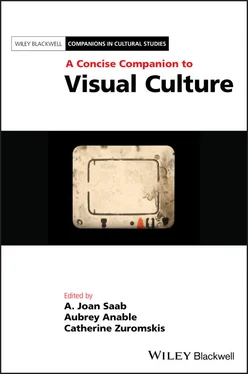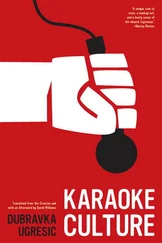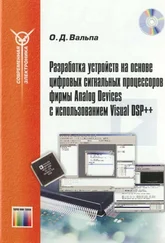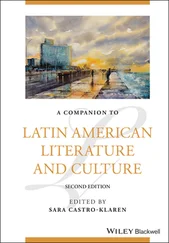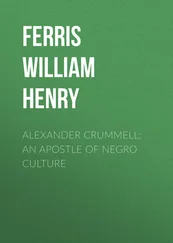Our initial project, launched in the mid‐1990s, was to respond to the complex and messy ways in which the visual, in all of its historicity, was becoming integral to all aspects of everyday life. We hoped to draw together a combined yet flexible set of theories and methods through which readers might approach and interpret the lived and practiced relationship among visual modalities in social interaction across a spectrum of contexts—including fine art, cinema, television, advertising, and emergent new media. The visual took on new urgency in the 1990s, the decade during which visual and time‐based graphic systems became ubiquitous in personal computing and in art, science, and medicine. The book was launched during a global health crisis (the ongoing AIDS pandemic) and on the cusp of the release of specialized and consumer‐accessible digital visual and time‐based computer imaging and graphics systems, image archive digitization tools, mobile phone cameras, and a host of other visual technologies. These changes impacted not only the arts and consumer cultures but also education, medicine, science, and law, fields through which imaging and visuality were becoming more central to the practice of everyday life as well as to systems of knowledge and power.
We were initially inspired by John Berger’s (1972) Ways of Seeing , a classic that, despite its continued popularity, by the mid‐1990s had fallen out of sync with the times. We wanted to write a short work, evocative and readable, that would update Berger’s seemingly timeless text. We aimed to expand its focus from photography and fine art not only to film and popular media but also to media’s new uses in the nascent digital era—uses that went beyond art and popular culture. The cultural context of the 1990s seemed to demand such a widening of scope. AIDS activism had politicized art practice and critical theory in ways that made clear the role of art and the media, and of art and media theory, in contemporary queer, feminist, and radical movement politics. And they also made clear the extent to which imaging was becoming increasingly indispensable not only to voicing rights, but also to the critical interrogation and remaking of knowledge discourses and treatment practices. Public health media and biomedical research, information, and knowledge were increasingly being produced via visual and audiovisual formats. In addition, critical communication studies, with its emphasis on information systems and popular media channels and flows, became conversant with art theory at this very time, in part to theorize this new shift toward visual knowledge and practice in the public sphere and in institutional contexts.
Volume 43 of October , a 1987 issue edited by Douglas Crimp and titled AIDS: Cultural Analysis, Cultural Activism , was a watershed in this regard. The arts journal included work by Paula A. Treichler, a feminist linguistics and communication studies scholar whose analysis deftly spanned advocacy for and theory of activist video art, popular media critique, and interpretation of knowledge production in biomedical research and public health. By the mid‐1990s, video and digital media forms, which were new at the time, had been introduced as objects of study not only in art history but also in communication studies. Queer and feminist visual artists and theorists were taking on media cultures and technoscience. Yet there was not yet a cohesive primer through which to introduce to readers the tactical alliances and intersections available and enlisted into action across those fields and across the divide between criticism or theory on the one hand and research‐based art practice and activism on the other. We hoped to speak to artists, activists, and theorists as well as to scholars by bridging these areas with the help of a mix of theories and methods that would bring out the stakes of working on the visual in a cohesive yet syncretic way.
In research‐based art practice during this time, drawing, photography, film, media, and performance were being used in ways that moved beyond the closed frameworks of structuralism and formalism. This was evident in the work of the “pictures generation” artists and new narrative filmmakers, as well as in a number of other 1990s approaches to practice that incorporated criticism and theory. This suggested to us the need for a rethinking of the mix of critical theories that could support this poststructuralist movement away from dogmatic adherence to form. At the same time, the dogmatism of poststructural deconstructive and psychoanalytic critical theory of the 1980s and early 1990s came into question as theorists took stock of the unintended impact of totalizing theories of power and knowledge. As Eve Kosofsky Sedgwick noted, totalizing criticism made it harder rather than easier to account for local and contingent relationships among knowledge, experience, and its forms of explanation, exchange, interpretation, representation, criticism, and experience (Sedgwick 2002, 123–151). Picture‐generation appropriation politics reigned as art practitioners such as Barbara Kruger took up proto‐social media forms to do theory by other means. The redirecting of modernist practice and theory toward postmodernist tactics such as irony, parody, nostalgia, and appropriation was a turn we wanted to contextualize historically and to examine in ways that remained open to tactical experimentation with older modernist and formalist methods and theories, which we also aimed to introduce in the book. Our goal was not so much to unify and streamline theory around the “now” of postmodern formations as it was to capture this mix in all its messy yet productive contradictions and future possibilities, which required accounting for the potentiality and failures of theory in modernity.
In retrospect, this description of our approaches can perhaps make our initial foray sound more systematic than it was. In fact our aim was largely shaped by the work we had done as practitioners and early career scholars, and were currently doing—in part through writing and curating and, importantly, through what we were teaching and wanted to teach in our classes: the kinds of images and practices that we wanted to interpret with our students, and the kinds of connections across social arenas and domains of practice that we wanted our students to make. Our particular institutional placements demanded a kind of bridging work and explanatory labor that was somewhat unusual in its scope, for that time. Focus on everyday image cultures or on biomedical imaging practice was not common in film and media studies or in art history of the era. Teaching across history/theory and practice was relatively new. American cultural studies was largely organized around the popular. In conceptualizing Practices of Looking , we hoped to account for an emergent field that crossed art history, film studies, media studies, cultural studies, and critical, research‐based, and activist practice‐based art and media and to provide a resource, on the cusp of the digital turn, that would offer a flexible set of tactics for approaching the visual—without mandating particular interpretations or a de rigueur set of methods. We were aiming for flexible means of theorization that would work across forms. Whereas the visual culture methods emerging around the new art history emphasized semiotics, film studies was forwarding psychoanalytic and narrative interpretive methods in parallel conversations. Yet few options were in place if one wanted to make sense of the differences or to work across these discourses in cultures of convergence—an activity that includes the traditional academic disciplines and not just media formats.
While we were writing the first edition of our book, the historical images under discussion in art and photography history classes were not yet digitized, and not yet available on the Internet or in searchable databases. Easy access to digital reproduction through licensing—at a cost, from private image brokers, and in some cases for free, from public institutional collections—was still just over the horizon. Imaging and image reproduction were themselves becoming more pervasive and more flexible sets of modalities. This was the case not only in art, where slide library digitization would soon transform both practice and pedagogy, but also in film and video. In the pre‐YouTube era before 2005, audiovisual media were viewable either through film prints or on VHS, but never online. Practically, then, the convergence of slides, films, and video circulation and display through computing after 2000 made teaching across the arts and in various media seem fluid and natural. This was a transformation that demanded convergence among an array of histories and theories as well, in order to account for both the phenomenology of experience and the economic and sociopolitical realities of image access, ownership, taste, and markets on a global scale. Importantly, social media were not yet introduced and the mobile phone camera was not yet an entity when our first edition was released. Meanwhile, fields such as medicine and law, disciplines previously dominated by text and the word, were engaging with images as routine parts of everyday research, treatment, service, and teaching. This shift required theorization among those of us with expertise in image and media history and theory. We were keen to adapt the theories at hand to these underconsidered areas of visual culture.
Читать дальше
